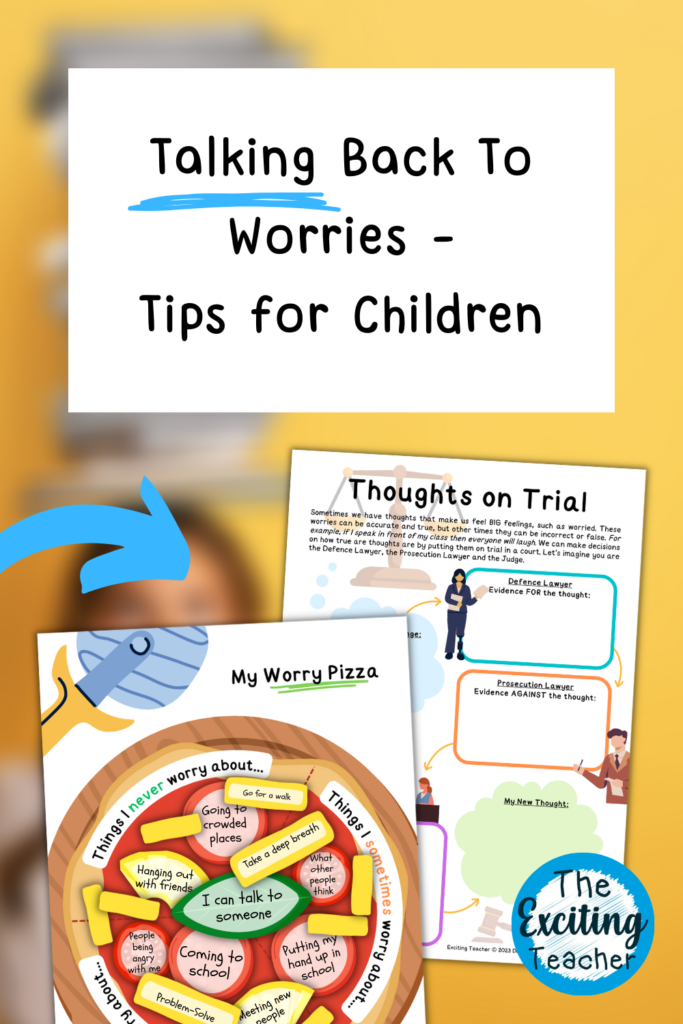Talking back to worries is a simple skill that we can use as grown-ups and for teaching children. It’s normal for children to feel anxious at times, but letting fears run wild can really impact children’s mental health. That’s why it’s important to teach healthy coping strategies like “talking back” to unhelpful thoughts.
Basics of Talking Back To Worries:
The idea is to get children to challenge their own worries, rather than letting those worries control their emotions.
For example, if your child is anxious about starting a new school, first have them voice or write down the exact thoughts: “What if I don’t make friends?” or “What if I get lost in the big school?”.
Then help them respond with positive statements, such as “I’m a friendly person, I’m sure I’ll meet kids who want to play” or “If I get lost, I can ask a teacher for help getting around.” This is an example of talking back to worries.
Verbally challenging worries, by talking back to worries, short-circuits the anxious thought loop in their brain. It gives children a sense of control and reminds them of their own power. Hearing reassuring statements in their own voice is more calming than having someone else say “Don’t worry.”
One example of this is ‘putting thoughts on trial’, whereby you take the thought to ‘thought court’ and determine the pros and cons of the thought as a way of gaining evidence for talking back to worries.
Some helpful sentence starters include:
- I can handle this situation by…
- Even if the worst case happens, I know I’ll be okay because…
- My fear is telling me (the worry), but I know (positive viewpoint).
Make talking back to anxieties a daily practice. Over time, children will learn to self-soothe and reframe unhelpful thoughts. They’ll realise they have agency over how they respond to stressful situations. Learning this mental health and resilience skill early provides lifelong benefits.
The next time your child shares a worry, help them talk back to it. Boost their confidence and let them tell that anxiety who’s boss! Teaching children to challenge their own thoughts builds lasting resilience.
Top Tip
Try saying aloud worries in a funny voice. This helps the worry to detach from who we are as people. This can help children to understand that they are not their worry but instead, their worries are separate to who they are as a person.
Find our other blog posts here.
Helpful Resources:
Share on:
Pin this:



